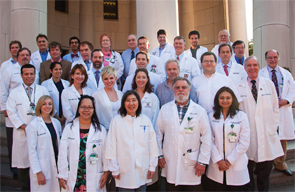
Sergey Nivens/shutterstock.com
An interdisciplinary and collaborative environment is a critical factor for the advancement of basic science and clinical research in the academic environment, says William J. Koopman, MD, former director of the University of Alabama at Birmingham’s (UAB’s) Division of Clinical Immunology and Rheumatology. And in 1977, when he was being recruited by Division Director J. Claude Bennett, MD, the presence of these features figured prominently in Dr. Koopman’s decision to relocate from the National Institutes of Health to Birmingham.
Committed to continuing his own research, Dr. Koopman was impressed by the cross-disciplinary opportunities offered at Birmingham—exemplified, he says, by the fact that Dr. Bennett held dual appointments in both the Department of Medicine, as director of the Division of Rheumatology and Clinical Immunology, and in the Department of Microbiology, as chairman.
“I did not want to be in a cloistered environment,” Dr. Koopman recalls. “I was looking for an institution that really promoted interdisciplinary and collaborative research. I thought UAB had that in spades.”
And there was another quality to the division that attracted him: “UAB was a young institution at the time I was being recruited, and I saw a real spirit there of growth, a ‘can-do’ attitude that we can be the best.” Dr. Koopman, now professor emeritus and an ACR Presidential Gold Medal winner, served as division director from 1983–1995. Then, as had his predecessor Dr. Bennett, he became chair of the Department of Medicine. (Both also served as presidents of the ACR and editors-in-chief of Arthritis & Rheumatism, now known as Arthritis & Rheumatology.)

Faculty and fellows in the Division of Clinical Immunology and Rheumatology and the Division of Pediatric Rheumatology at the University of Alabama at Birmingham.
Other prominent faculty with whom we spoke echoed the attractions Dr. Koopman enumerates, strengths that he augmented during his time as division director. For example, he encouraged the translational clinical investigational program and founded the Arthritis and Musculoskeletal Diseases Center in 1985. UAB developed one of the first units to test new biologics, such as TNF inhibitors, in phase I and II trials in RA. These targeted therapies offered not only improved outcomes for patients, but an opportunity for researchers to increase knowledge of disease processes.
“With our strong marriage with the fundamental discipline of immunology, we were in a strategically placed position to take advantage of new breakthroughs in understanding the immune response and then applying these to human disease,” Dr. Koopman observes.

